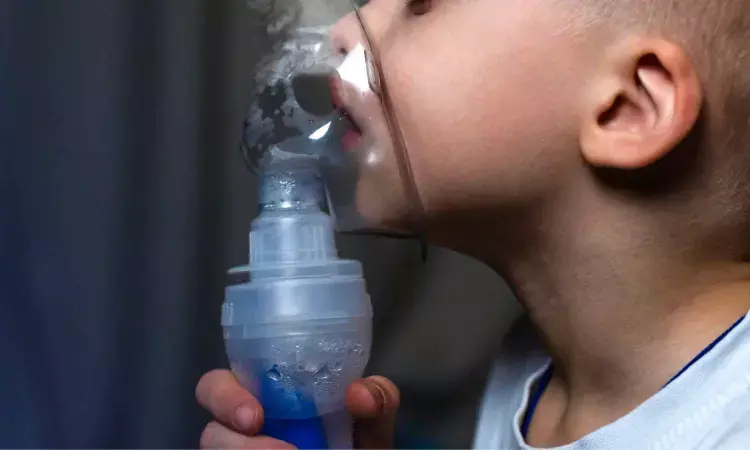- Home
- Medical news & Guidelines
- Anesthesiology
- Cardiology and CTVS
- Critical Care
- Dentistry
- Dermatology
- Diabetes and Endocrinology
- ENT
- Gastroenterology
- Medicine
- Nephrology
- Neurology
- Obstretics-Gynaecology
- Oncology
- Ophthalmology
- Orthopaedics
- Pediatrics-Neonatology
- Psychiatry
- Pulmonology
- Radiology
- Surgery
- Urology
- Laboratory Medicine
- Diet
- Nursing
- Paramedical
- Physiotherapy
- Health news
- Fact Check
- Bone Health Fact Check
- Brain Health Fact Check
- Cancer Related Fact Check
- Child Care Fact Check
- Dental and oral health fact check
- Diabetes and metabolic health fact check
- Diet and Nutrition Fact Check
- Eye and ENT Care Fact Check
- Fitness fact check
- Gut health fact check
- Heart health fact check
- Kidney health fact check
- Medical education fact check
- Men's health fact check
- Respiratory fact check
- Skin and hair care fact check
- Vaccine and Immunization fact check
- Women's health fact check
- AYUSH
- State News
- Andaman and Nicobar Islands
- Andhra Pradesh
- Arunachal Pradesh
- Assam
- Bihar
- Chandigarh
- Chattisgarh
- Dadra and Nagar Haveli
- Daman and Diu
- Delhi
- Goa
- Gujarat
- Haryana
- Himachal Pradesh
- Jammu & Kashmir
- Jharkhand
- Karnataka
- Kerala
- Ladakh
- Lakshadweep
- Madhya Pradesh
- Maharashtra
- Manipur
- Meghalaya
- Mizoram
- Nagaland
- Odisha
- Puducherry
- Punjab
- Rajasthan
- Sikkim
- Tamil Nadu
- Telangana
- Tripura
- Uttar Pradesh
- Uttrakhand
- West Bengal
- Medical Education
- Industry
Use of High-flow nasal cannula outside ICU associated with longer hospital stays, higher costs

Researchers have found in a new study that Use of High-flow nasal cannula (HFNC) treatment for patients with mild to moderate bronchiolitis may be associated with longer hospital stays and higher cost of care.
The study led by Le Bonheur Hospitalist Jeffrey C. Winer has been published in the American Academy of Pediatrics (AAP) journal Hospital Pediatrics.
“Historically, the relationship between HFNC usage outside of the intensive care unit and outcomes including hospital length of stay and cost is unclear. Our study sought to see if HFNC itself may be partially responsible for these outcomes,” said Winer.
HFNC is a treatment that delivers oxygen to a patient at a high rate, reducing the work of breathing. It is widely used for treating bronchiolitis, a lower respiratory tract infection and a leading cause of emergency room visits for children younger than 2. Recent studies on HFNC have shown variable results across patient populations, particularly regarding outcomes such as hospital length of stay (LOS) and cost of care. While severe cases of bronchiolitis where HFNC was used were associated with symptom improvement and decreased LOS and cost, HFNC use in mild to moderate cases has been associated with less symptom improvement, along with increased LOS and cost.
The purpose of this study was to explore the relationship between HFNC usage for non-intensive care unit (ICU) patients and patient outcomes, LOS and cost of care. Researchers reviewed data from 20 hospitals in the Pediatric Health Information System. The data included patients younger than 2 years with a principal or secondary diagnosis of acute bronchiolitis. Researchers categorized these hospitals based on the proportion of non-ICU patients treated with HFNC into low, moderate or high non-ICU HFNC usage (NIHU).
Results showed that LOS was longer for patients in moderate to high NIHU hospitals compared to low NIHU hospitals. Analysis of cost of care showed similar results, where moderate and high NIHU hospitals showed higher costs compared to low NIHU hospitals, even after adjusting for clinical and demographic characteristics. Based on their analyses, researchers estimate that high NIHU hospitals have 5% to 30% longer LOS and 2% to 31% higher cost of care than low NIHU hospitals.
“The large number of patients admitted to children’s hospitals means that even small relative changes in these values may lead to large burdens to hospitals and the health care system,” said Winer.
This study suggests that higher NIHU may lead to increased overall resource utilization for pediatric bronchiolitis patients. More research is needed to assess how HFNC usage affects LOS and cost of care across pediatric hospitals and if HFNC should be limited in non-ICU patients.
Reference:
Jeffrey C. Winer, Elizabeth O. Mertens, Kristen Bettin, Elisha McCoy, Sandra R. Arnold, https://doi.org/10.1542/hpeds.2022-006660
Dr Kamal Kant Kohli-MBBS, DTCD- a chest specialist with more than 30 years of practice and a flair for writing clinical articles, Dr Kamal Kant Kohli joined Medical Dialogues as a Chief Editor of Medical News. Besides writing articles, as an editor, he proofreads and verifies all the medical content published on Medical Dialogues including those coming from journals, studies,medical conferences,guidelines etc. Email: drkohli@medicaldialogues.in. Contact no. 011-43720751


